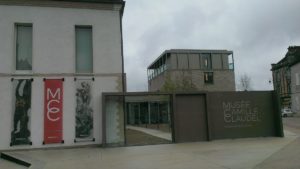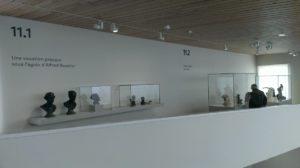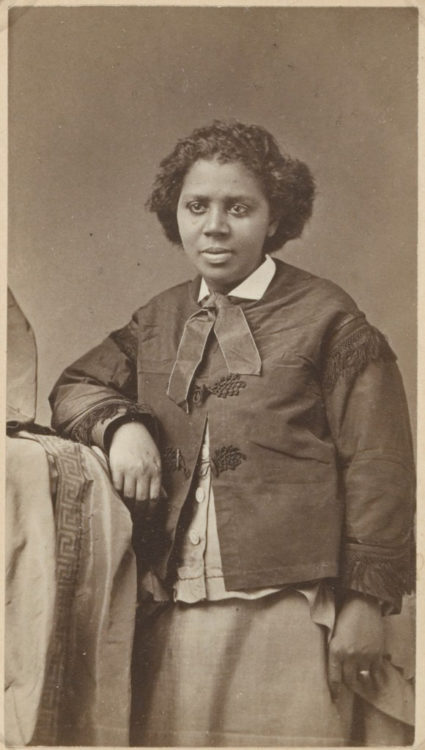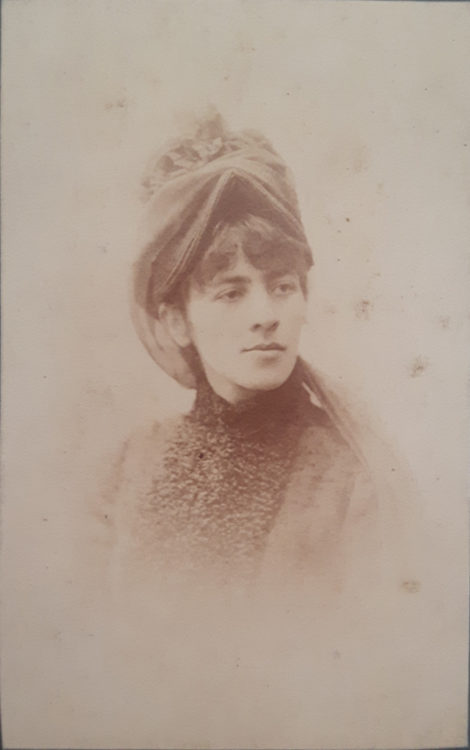Review
The Camille Claudel Museum, which has been open since 26 March 2017 in Nogent-sur-Seine, should not surprise us with its title. This institution, with a promising name for those interested in particular in Camille Claudel (1864–1943), or women artists in general, is above all a museum of French sculpture between 1830 and 1914. Its collections come from the former municipal musée Dubois-Boucher, named after the two sculptors from Nogent-sur-Seine, Paul Dubois and Alfred Boucher, of whom the town holds the studio collections as well as many sculptures by Joseph Marius Ramus. With regard to Camille Claudel, the museum holds the world’s largest collection of her works and, of the 200 works on display, 43 are by her, split between 7 rooms out of the 15 in total.
If you immerse yourself in Claudel’s art, you are pretty much left to yourself, as no room descriptions or descriptive labels are provided, and the works are simply set out in numbered spaces. The rooms devoted to Claudel on the upper floor are organised chronologically, beginning with her training under Alfred Boucher before shifting to her period in Auguste Rodin’s studio. The sculptures of the pupil and the master are placed side-by-side to reveal their formal similarities, in particular with Claudel’s Jeune fille à la gerbe and Rodin’s Galatée. This correspondence in formal research is largely explained by art historian Anne-Marie Paris and the General Curator of Museums, Antoinette Le Normand-Romain, in a documentary shown halfway around the exhibition. This provides a valuable and unique source of information for understanding Claudel’s career.
In the section “Camille Claudel, portraitist”, at the centre of the gallery we find the impressive Petite Châtelaine, placed on deposit by La Piscine de Roubaix, as well as the busts of Paul Claudel and Auguste Rodin. On the ground floor, the group L’Âge mûr is displayed in a setting that offers an autobiographical reading of its iconography, as the bronze work is ringed with sculptures by Rodin for which she acted as model, deliberately allowing the shadow of the break-up of the pair’s amorous relationship to hang over the work.1 The last room, devoted to “sketches from life for Perseus and the Gorgon”, focuses on the marble group of the same name, a work whose large size contrasts with the small bronzes she produced in the late 1890s.
The absence of drawings, photographs and letters by Camille Claudel or which directly concern the artist sadly leaves the exhibition without substance. It is punctuated by quotations but these are not even from the sculptor.2 The quotes are by men speaking of the artist, such as the famous phrase by Rodin: “I showed her where to find gold but the gold she finds is very much her own” which is reproduced in the first room. The confusion is above all given by the name of the museum. There is a certain expectation, enthusiasm even, for those interested in women artists and the sculptor herself, but, though her name is to be found everywhere, Camille Claudel is herself hard to find. Yet it is a museum that sculpture-lovers may well be thrilled with as it contains works by sculptors who are little known and pieces that are never – or only rarely – exhibited. However, those hoping to visit the first monographic museum of a woman artist in France will find themselves rather disappointed: it is primarily a museum of sculpture rather than of a sculptor.
Some biographical readings of the work suggest that the group represents Camille Claudel beseeching Auguste Rodin as he is taken away by Rose Beuret. These, however, have since been put in perspective by a recontextualisation of Claudel’s production in the fin-de-siècle Symbolist trend and by study of the reception given to her works exhibited in the Salons. See in particular the analysis by art historian Claudine Mitchell in her essay “Intellectualité et sexualité : Camille Claudel, femme sculpteur fin de siècle”, exh. cat. Camille Claudel (1864-1943), Paris, Musée Rodin/Gallimard; Madrid, Fundacion Mapfre (2008), pp. 81-101.
2
With the exception of the title of the section “Croquis d’après nature”, which is by Claudel, the quotations given are from Auguste Rodin, Mathias Morhardt, Paul Claudel and Eugène Blot. Whereas the role of these men in Camille Claudel’s career should not be minimised, as they were of importance on several accounts, it is to be regretted that there are no reproductions of extracts from Claudel’s correspondence, which is regularly reissued. See Camille Claudel, Correspondance, Anne Rivière and Bruno Gaudichon (eds.), 3rd edition, revised and enlarged, Paris, Gallimard, 2014.


















